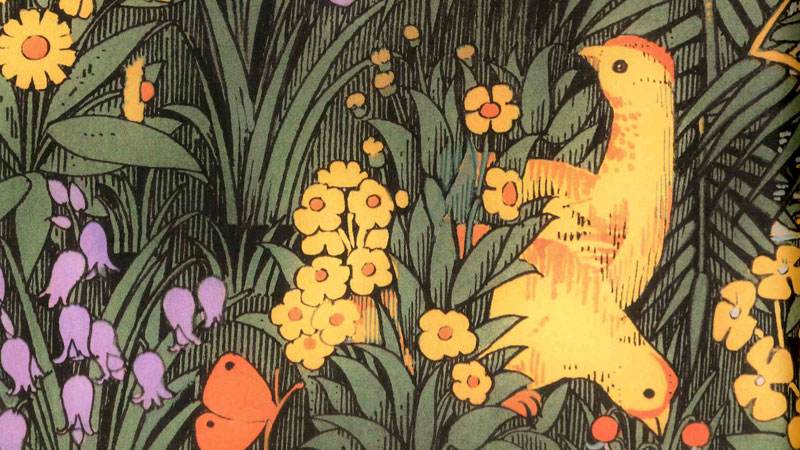In truth, Pat was not an animal person although a devoted owner of a string of five labradors. Her passion was cats. It was with the greatest difficulty that she was restrained from bringing back a succession of kittens and cats from every holiday. She recalled with surprising accuracy a tabby from Naxos, pale pastel ginger from nice or a particularly neatly marked black and white specimen from the south of France. Jolly, her white cat, was a frequently recurring subject. But her models were not all to be found at home and knowing her audience well, she produced a series of National Trust cats tea towels, each featuring a group of feline portraits of the house cats of varying properties. Dogs followed. With other animals, she had been known to ask her husband or son to provide a frog, heron, or otter…
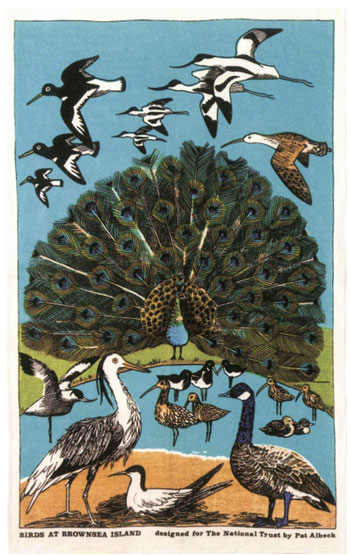
Pat once said that until she became the mother of a bird-mad son she just thought there were robins, blackbirds and then other birds that looked only slightly different – the entire world of classification, families and species had passed her by But the use of pattern in Gods creation resonated with her and it is no surprise that she favored those birds with strong graphic credentials.
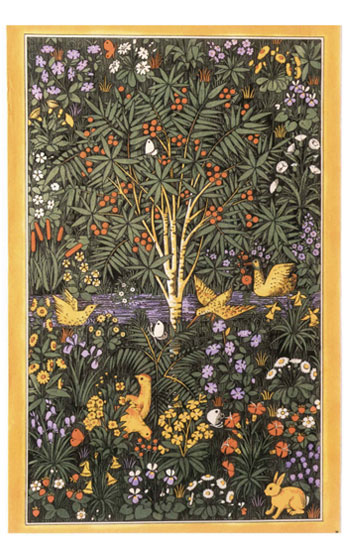
The unicorn tapestries at the Metropolitan Museum of New York’s medieval outpost, The Cloisters, were a major source of inspiration for Pat; the jewel-like detail and botanical accuracy were easily transferable to Pat’s sharp pen and brush. The museum was a good client and an excuse to visit Manhattan.
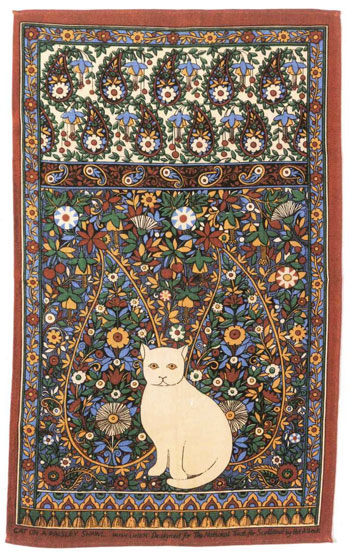
There are certain design symbols that recur year after year and the paisley is just such a shape and style. The easily recognized curled teardrop, while first associated with a small Scottish industrial town of the same name, is in fact originally derived from Indian textiles. The white cat is the designer’s own.
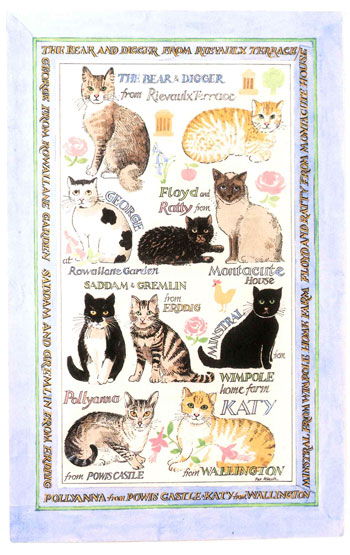
There were two versions of this design. The idea was strong and resonated especially well with regular visitors, who grew to know the feline guards and residents of their favorite property. However, even well-protected National Trust cats do, from time to time, move on to the heavenly mousing grounds, and new characters arrive to take their place necessitating a revision of this tea towel. From time to time a new cat would retain the name of its predecessor (and theirs before them) providing editorial confusion. Although some cats were recorded face to face, others were sent to Pat as photographs and many more than could ever be included. Awkward decisions had to be made…
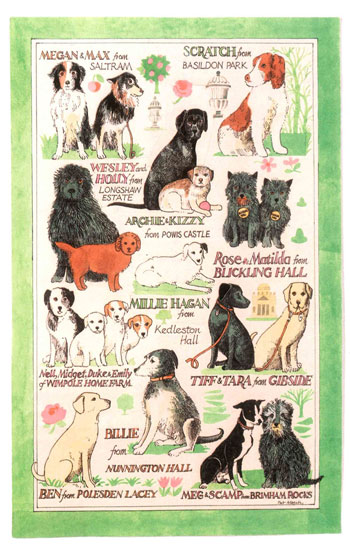
The success of National Trust cats(and indeed Canterbury Cathedral cats) crossed species to a selection of canine Trust supporters.
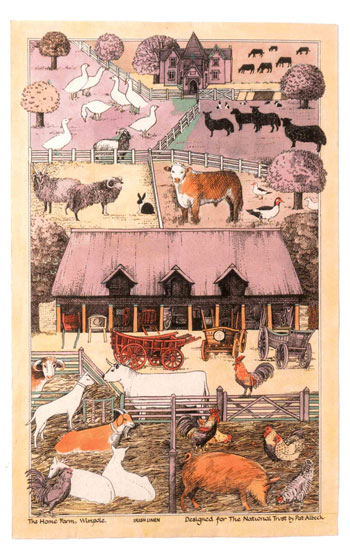
Wimpole outside Cambridge is a much-visited Trust property, but as well as the Hardwicke family splendid mansion and extensive park, it has a splendid model farm designed by Sir John Soane in 1794. This design softens the austere, mannered architecture with charming animal portraits.

